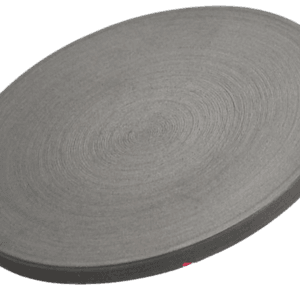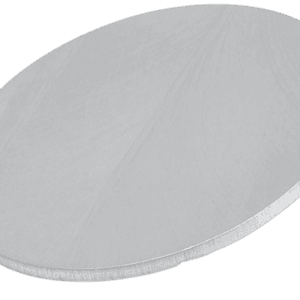Potassium Fluoride Sputtering Target Description
Potassium Fluoride Sputtering Target is used in the sputtering process, a technique for depositing thin films onto substrates. In this process, high-energy ions bombard the surface of the potassium fluoride sputtering target, causing atoms or molecules to be ejected. These ejected particles then deposit onto a substrate, forming a thin film with properties derived from the target material. The specific shape and size of the sputtering target can vary based on the deposition requirements and equipment used.
Related Product: Potassium Sputtering Target
Potassium Fluoride Sputtering Target Specifications
| Compound Formula | KF |
| Molecular Weight | 58.10 |
| Appearance | Gray target |
| Melting Point (℃) | 858 |
| Density (g/cm3) | 2.48 |
| Available Sizes | Dia.: 1.0″, 2.0″, 3.0″, 4.0″, 5.0″, 6.0″ Thick: 0.125″, 0.250″ |
Potassium Fluoride Sputtering Target Handling Notes
Potassium Fluoride Sputtering Target Application
Potassium Fluoride Sputtering Targets are employed in a range of applications including:
- Optical Coatings: Potassium fluoride thin films are used in optics for anti-reflective coatings and interference filters, enhancing the performance of optical components by reducing reflections and improving light transmission.
- Semiconductor Manufacturing: In the fabrication of integrated circuits, potassium fluoride coatings can be used to create precise layers that are critical for the functionality of semiconductor devices.
- Research and Development: Potassium fluoride coatings find applications in various research and development projects, where their unique properties can be leveraged for innovative solutions and experimentation.
Potassium Fluoride Sputtering Target Packaging
Our Potassium Fluoride Sputtering Target is widely utilized in the production of coatings for a variety of applications, including:
- Optical Coatings: Enhancing optical performance with anti-reflective coatings and interference filters.
- Semiconductor Manufacturing: Fabricating precise layers essential for integrated circuits.
- Research and Development: Supporting diverse R&D applications with its unique properties.





Reviews
There are no reviews yet.